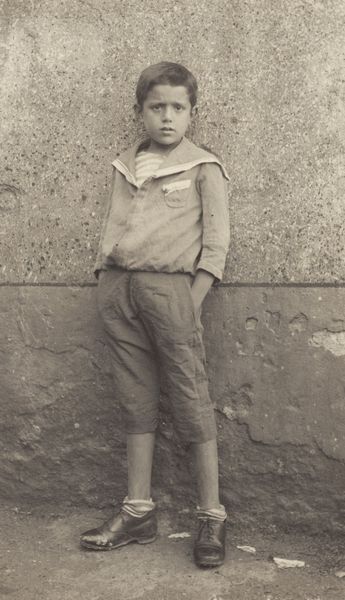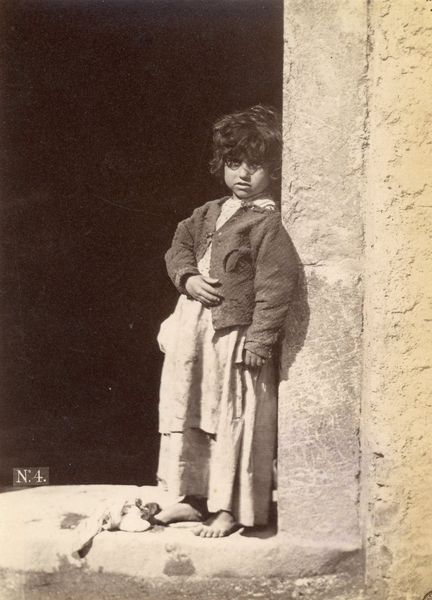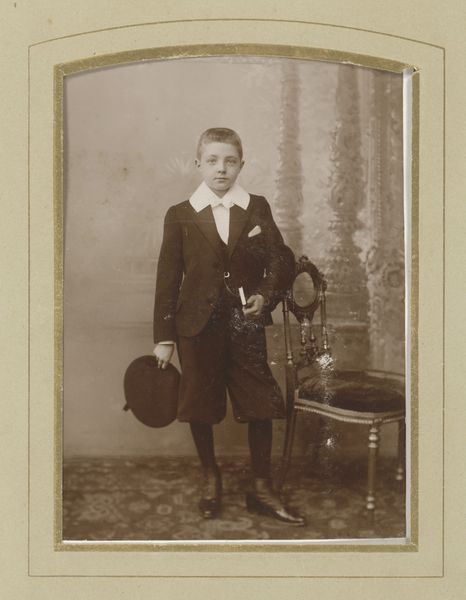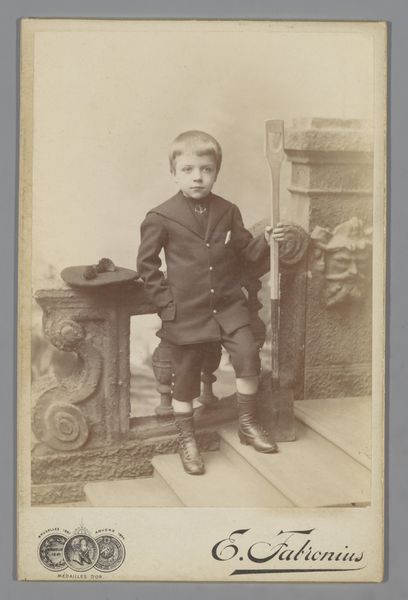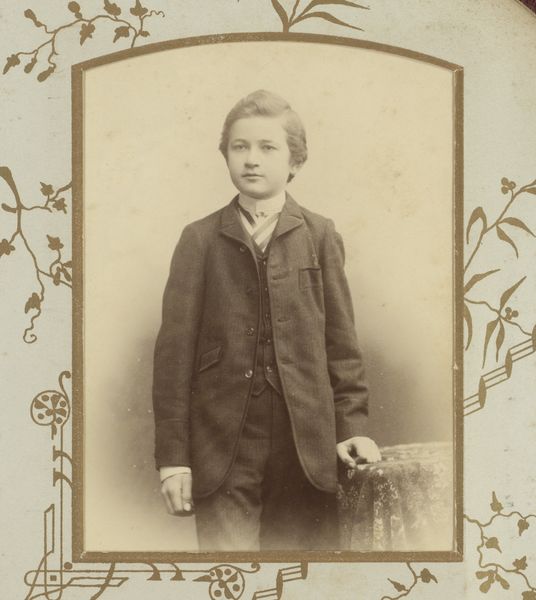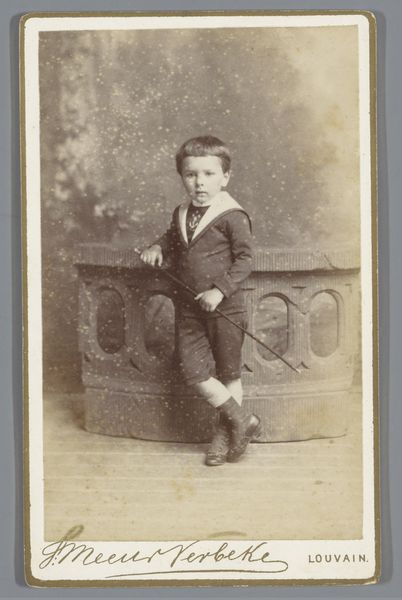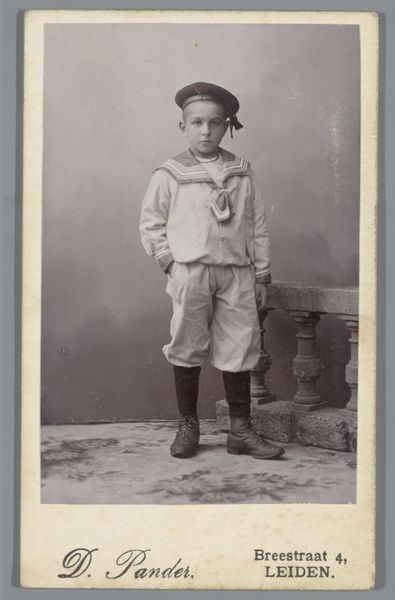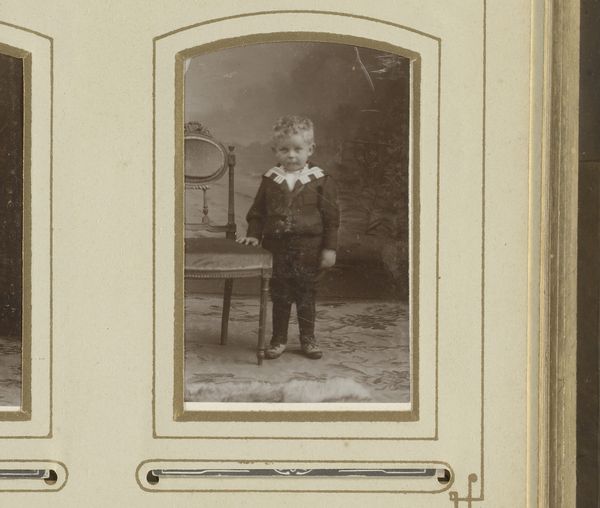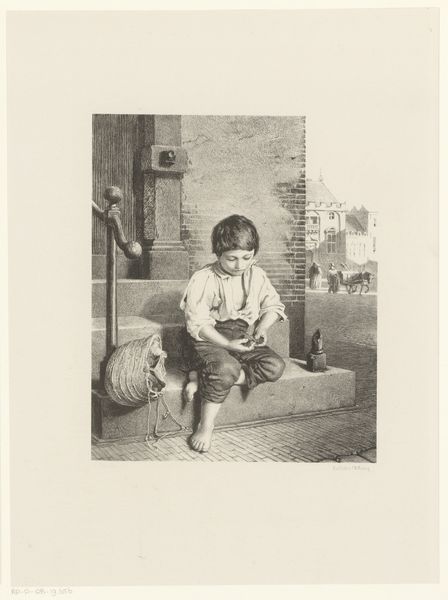
Dimensions: sheet (trimmed to image): 20.2 × 15.5 cm (7 15/16 × 6 1/8 in.) page size: 34.8 × 27.3 cm (13 11/16 × 10 3/4 in.)
Copyright: National Gallery of Art: CC0 1.0
Alfred Stieglitz captured this silver print photograph of a Venetian boy, sometime around the turn of the century. The child's bare feet and tattered clothes immediately strike the eye, a stark contrast to the romanticized visions of Venice. Consider the enduring motif of the 'urchin' throughout art history. We see echoes of Murillo’s street children or even Caravaggio’s mischievous figures. These depictions often carry dual meanings. On one hand, they represent innocence and vulnerability; on the other, a certain untamed freedom. The state of undress and the unkempt hair, appearing in different forms across different cultures, often symbolize a rejection of societal norms. The boy's direct gaze evokes a primal human connection, compelling us to confront uncomfortable truths about poverty and social inequality. This image is not just a snapshot of a moment, but a recurring symbol in the theater of human life. It echoes through time. The child's image resurfaces and evolves, prompting reflection across generations.
Comments
No comments
Be the first to comment and join the conversation on the ultimate creative platform.
